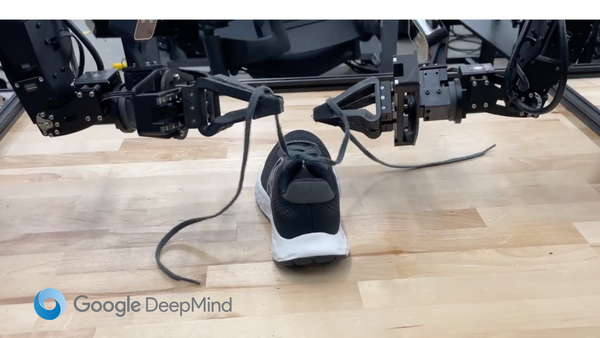NVIDIA’s Isaac Adoption, Walker S Building Cars, and XBot-L's Great Wall Climb
NVIDIA’s Isaac platform is being embraced by industry leaders. Ubtech's Walker S robots on assembly lines. Robot Era’s XBot-L climbing the Great Wall of China.

Major strides in the humanoid robot market are creating buzz across various industries.
NVIDIA’s Isaac platform is being embraced by industry leaders. Dongfeng Motor is strategically using Ubtech's Walker S robots on assembly lines. Robot Era’s XBot-L made history by climbing the Great Wall of China.
These developments highlight the transformative potential of humanoid robotics, signaling a future where they enhance both industrial and everyday applications.
Let's dive in...
NVIDIA’s Isaac Platform Adopted by Robotics Industry Leaders
NVIDIA has announced that several leading robotics companies, including BYD Electronics, Siemens, Teradyne Robotics, and Intrinsic (an Alphabet company), are adopting the NVIDIA Isaac™ robotics platform to develop AI-powered autonomous machines.
This platform, featuring advanced libraries, simulation technologies, and AI models, aims to enhance efficiency and safety in industrial settings.

WHAT YOU NEED TO KNOW
- Adoption of Isaac Platform: Industry leaders such as Siemens, BYD Electronics, and Teradyne Robotics are integrating the NVIDIA Isaac platform into their systems, utilizing its capabilities for autonomous robots, including robot arms, humanoids, and mobile robots.
- Technological Features: The platform includes Isaac ROS, Perceptor, Manipulator, and Sim, offering tools for developing AI-driven robots capable of complex tasks in factories and warehouses, potentially boosting safety and productivity.
- Widespread Impact: Companies across Asia, Europe, and North America are using the Isaac platform to advance the development and deployment of robotics solutions, which could have significant implications for industrial automation and efficiency.
WHY YOU SHOULD CARE The integration of NVIDIA's Isaac robotics platform by prominent industry players is noteworthy for several reasons:
- Efficiency and Safety Improvements: AI-powered robotics can improve operational efficiency and safety in industrial environments, automating repetitive and precise tasks and reducing human error and injuries.
- Boosting Innovation: NVIDIA's advanced simulation and AI technologies can accelerate the development of innovative robotics solutions, pushing the boundaries of industrial automation.
- Maintaining a Competitive Edge: By adopting the Isaac platform, companies can stay competitive in the robotics market, driving technological advancements and maintaining a leadership position in industries such as manufacturing, logistics, and healthcare. This understanding is crucial for stakeholders aiming to leverage the transformative potential of AI and robotics in their operations.
Dongfeng Motor to Use Ubtech Robotics Walker S Humanoids on Assembly Lines
Through its subsidiary Dongfeng Liuzhou Motor Co., Ltd., Dongfeng Motor Corporation has entered into a strategic agreement with Ubtech Robotics to incorporate advanced humanoid robots into its vehicle manufacturing processes.
This collaboration will deploy Ubtech’s Walker S robots across Dongfeng's assembly lines in China, enhancing production efficiency and marking a significant advancement in automotive manufacturing.

WHAT YOU NEED TO KNOW
- Strategic Partnership: Dongfeng Liuzhou Motor has partnered with Ubtech Robotics to implement the Walker S humanoid robots in its vehicle assembly processes to enhance efficiency and precision.
- Advanced Robotics Deployment: Walker S robots, standing at 1.7 meters tall and equipped with high-performance servo joints and advanced sensory capabilities, will handle tasks like safety belt inspection, door lock tests, body quality checks, oil filling, and label applications.
- Technological Integration: These robots utilize a “fusion control” algorithm for real-time communication with factory systems. This enables seamless data sharing and interaction with their environment and human workers, thus integrating advanced AI into the manufacturing workflow.
WHY YOU SHOULD CARE Understanding Dongfeng Motor's integration of Ubtech’s humanoid robots is crucial for several reasons:
- Enhanced Manufacturing Efficiency: The use of Walker S robots promises to streamline production processes, reduce human error, and improve overall manufacturing efficiency, setting a new standard for automotive production.
- Technological Advancement: This move highlights the increasing role of advanced robotics and AI in industrial applications, showcasing the potential for humanoid robots to perform complex tasks in collaboration with traditional automated equipment.
- Industry Impact: As more automakers like Dongfeng and Tesla adopt humanoid robots in their production lines, the automotive industry is poised for significant transformation, potentially leading to increased productivity, reduced labor costs, and the advancement of next-generation mobility solutions. This trend is essential for industry stakeholders to monitor as it could reshape manufacturing practices and competitive dynamics.
Robot Era’s Humanoid Robot Climbed the Great Wall of China
Robot Era’s humanoid robot, XBot-L, has made headlines by becoming the first humanoid robot to climb the Great Wall of China.
The robot's advanced force control and perceptive reinforcement learning algorithms allowed it to navigate the challenging terrain, showcasing its dexterity, balance, and adaptability.
WHAT YOU NEED TO KNOW
- Climbing the Great Wall: XBot-L demonstrated its ability to walk steadily across the uneven surfaces of the Great Wall, highlighting its advanced locomotion and self-balancing capabilities through perceptive reinforcement learning algorithms.
- Technological Advancements: The robot's design incorporates high-torque-density modular joints, high-strength materials, and advanced force control algorithms, enabling it to adapt to various terrains and maintain stability.
- Perceptive Algorithms: XBot-L's perceptive RL algorithms enhance its ability to recognize and adjust to complex road conditions in real time, setting it apart from other robots that rely on simpler navigation methods.
WHY YOU SHOULD CARE Understanding Robot Era’s achievements with XBot-L is crucial for several reasons:
- Technological Innovation: Integrating advanced force control and perceptive RL algorithms in XBot-L represents a significant leap in humanoid robotics, highlighting the potential for robots to perform complex tasks in challenging environments.
- Industrial and Domestic Applications: These advancements in humanoid robotics could lead to more effective deployment in various settings, from industrial applications requiring precision and stability to domestic tasks that demand adaptability and dexterity.
Competitive Landscape: Robot Era's progress in developing XBot-L, despite being a newer player in the field, underscores the rapid pace of innovation in robotics. This development pressures established companies like Boston Dynamics and Unitree to continue advancing their technologies to maintain market leadership. Understanding these dynamics is essential for investors, competitors, and industry stakeholders.



